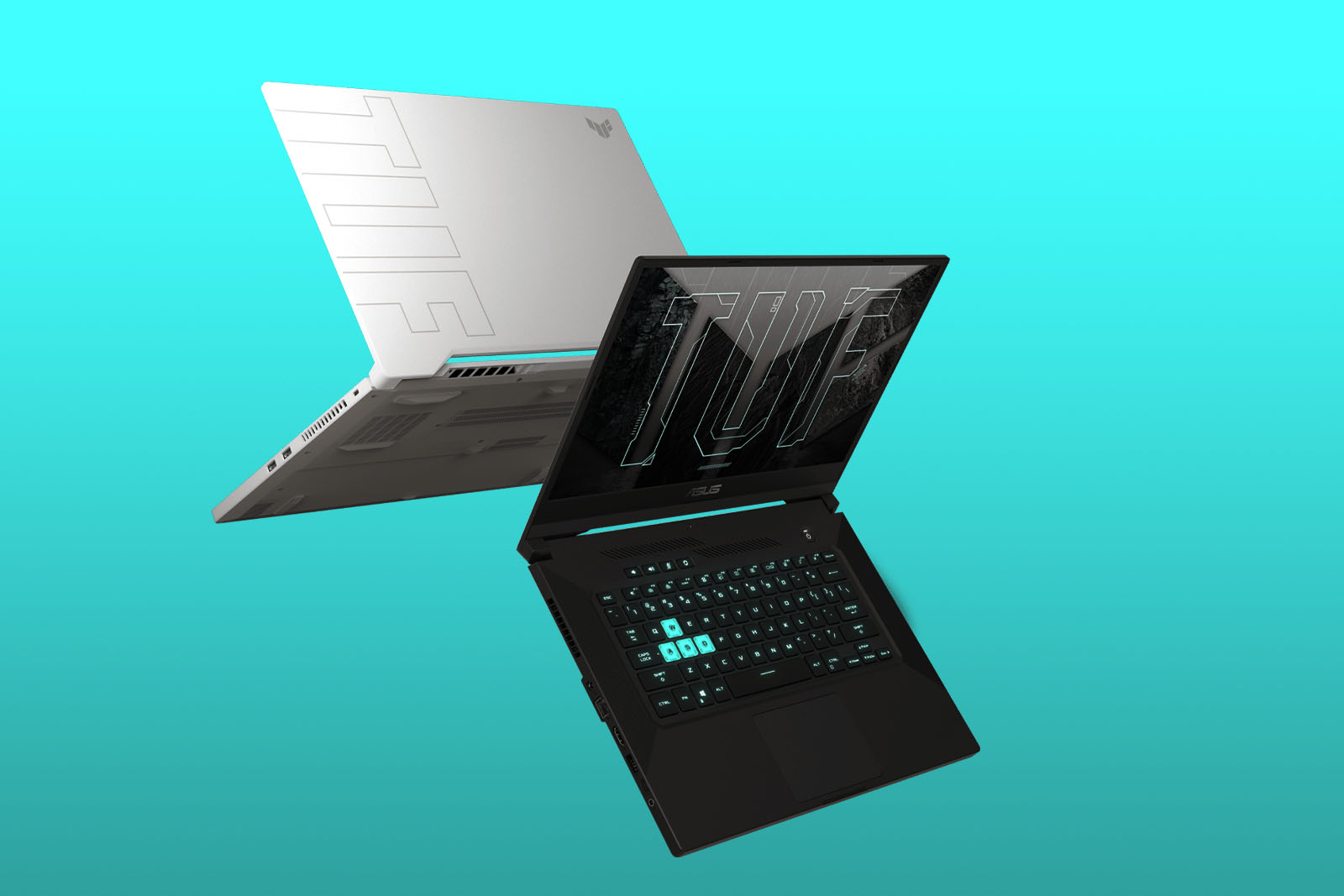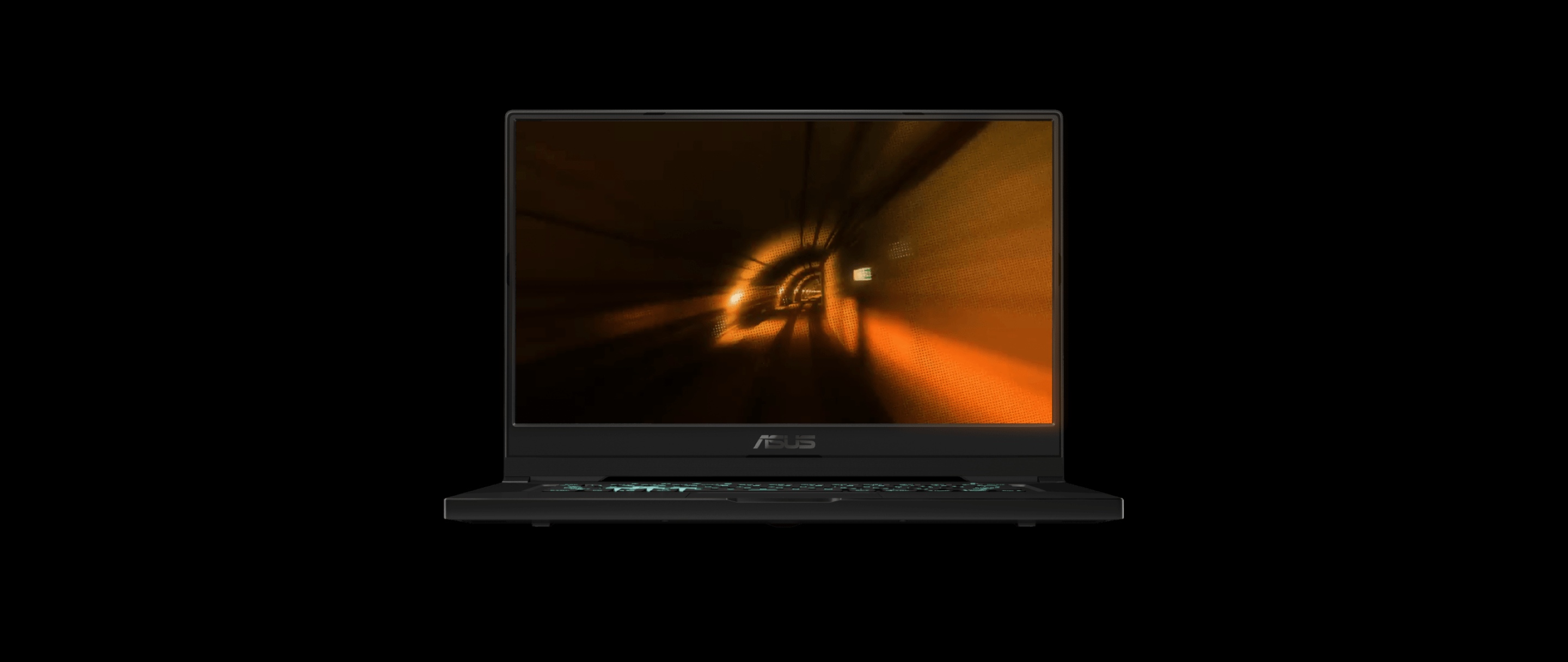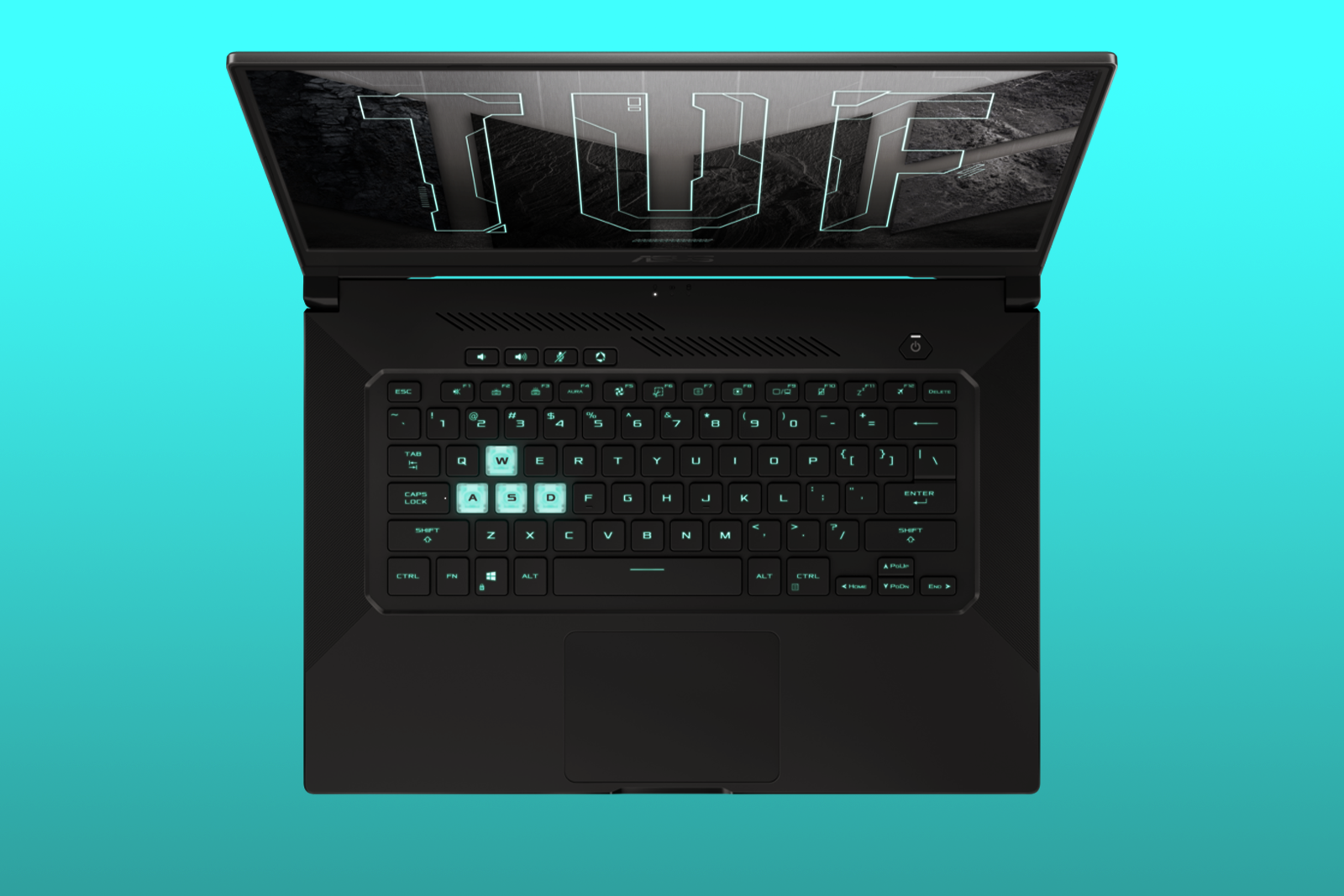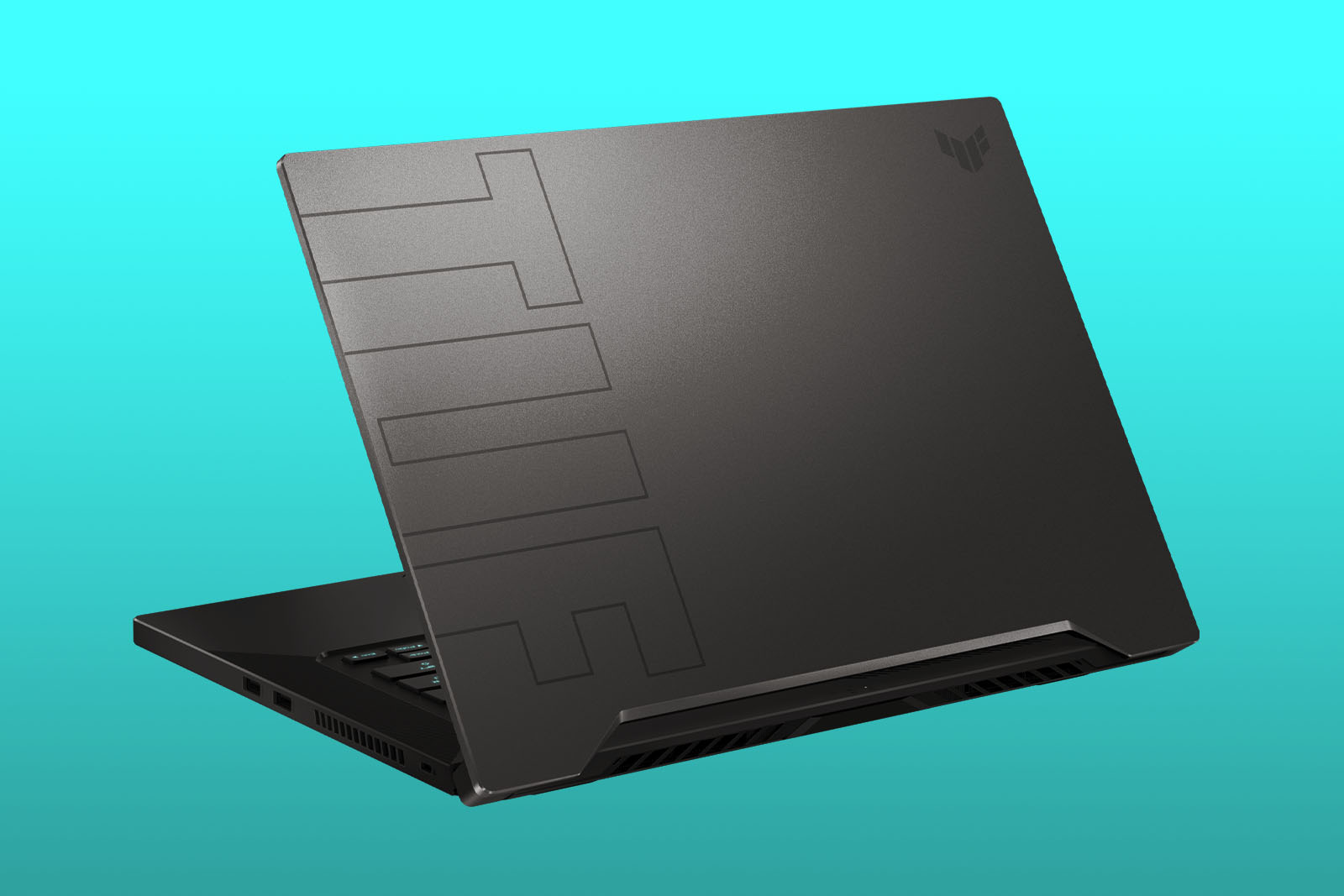The Asus TUF Dash F15 has some oddities as a gaming laptop, but treated more as a versatile multimedia device, there’s a lot to like.
Asus TUF Dash F15 (FX516) review: Versatile computing
Quick verdict
Asus is on fire with its gaming laptops of late. We recently road-tested the high-end Asus ROG Strix Scar 15 (G533Q) and cheaper Asus ROG Zephyrus G15 (GA503) gaming laptop, and were big fans of both.
We’ve spent the last few weeks testing the Asus TUF Dash F15 to see how it fares in comparison to those two Asus gaming laptops and whether it’s worthy of consideration for the best gaming laptops. The reality is that while it isn’t as impressive as those other two Asus gaming laptops, there’s still a lot to like about it, particularly if viewed as a versatile mobile multimedia PC.
The 240Hz screen screams that this is intended as a competitive gaming device, and despite comboing an 11th gen Intel CPU with an Nvidia GeForce RTX 3070, the benchmark results won’t blow you away. Still, when taken in the context of the price tag, the fact it can comfortably keep up with modern games while also offering solid battery life and non-gaming tasks means it may appeal more to those seeking a multimedia laptop with a side of gaming.
- The price is right
- Solid overall performance
- Fantastic 1080p screen
- Great battery life
- No webcam
- Limited USB ports
- Power-to-frame-rate ratio
- Average trackpad

What's in the box?
Don’t go looking for included peripherals or additions beyond the basics. You’ll get the F15 and a compact power brick (as far as gaming laptops go), which has a generous cable length and dual Velcro straps – one for the detachable main power cable, and the other for the smaller one that connects to the laptop – on either side of the brick.
Asus TUF Dash F15 (FX516) gaming laptop design
The TUF series is built to live up to how its namesake sounds: tough. This means you shouldn’t expect a whole lot in the way of prettiness for the sake of it (think: Alienware laptops), but what you get is what looks, feels and performs like something built to survive bumps in your choice of either Moonlight White or Eclipse Grey. I was sent the latter for review, and it is an absolute fingerprint magnet, so I’d recommend opting for the white design (assuming the lighter colour helps with this).
This toughness adds to the practicality of the F15, which sits closed at a whisker under two centimetres thick. Mercifully, the F15 sports an easy-to-open lid, which can be flipped one-handed without feeling like it’ll snap off. The keyboard is a seamless transition from a desktop ’board and the 1.7mm travel distance makes for responsive keystrokes. Keys are illuminated for night-time sessions, and the WSAD keys are translucent to really sell the idea that this is intended as a gaming laptop.
There’s also a generously sized touchpad, but it’s not as accurate as others and the two buttons can be finnicky. It’s not like you’ll be using the touchpad for gaming, so be sure to disable it with Fn+F10 to avoid registering unavoidable brushes when you are playing.

The screen is particularly impressive with a small bezel, 3ms response rate and a 240Hz refresh rate. Adaptive sync keeps gaming jag-free and the 100% sRGB categorisation offers an expected range of colours. What you won’t find anywhere on or near the screen is a webcam, which isn’t part of the F15 at all. This feels like an oversight, more so because of the limited ports.
There are three USB 3.2 ports and one Thunderbolt 4 port. Considering most peripherals, including webcams, are reliant on traditional USB ports, connecting a webcam and, essential for most gaming, an external USB mouse has you down to one port. If you use a wired USB headset, or a wireless one that requires a USB dongle, you’re all out of ports. Considering you might want to also connect a USB mechanical keyboard to glean more of a competitive edge, the F15 feels one or two USB ports shy of where it should be.
On the positive front, there’s an Ethernet port for wired reliability and an HDMI 2.0 port, but both of these have disclaimers, too. The HDMI port lets you connect to an additional monitor to extend or duplicate your display but, in gaming terms, it feels odd to connect to an external gaming screen when you already have a great 240Hz monitor, plus this mobile version of the Nvidia GeForce RTX 3070 graphics card isn’t great for beyond-1080p gaming (if you were thinking about a 1440p or 4K screen option).
Additionally, the HDMI port’s placement alongside the Ethernet port is partially problematic as you have a choice of either running the power cable above or below an Ethernet and/or HDMI cable, or running it around the back and sitting it in front of the side vents. Speaking of vents, there’s an identical one on the right of the F15, so whether you’re lefthanded or righthanded, you’ll want to use a mouse far enough away from the vents to not feel the heat.
Asus TUF Dash F15 (FX516) benchmarks and performance
The F15 is a solid rig made even more impressive by the reasonable price, which isn’t just affordable in terms of gaming laptops, it also makes a strong case as a versatile multimedia machine. Check out the table below to see how the F15 performed in titles that have in-game benchmarks at 1920x1080 resolution with recommended settings. These tests were run on with Windows 10 (build 10.0.19042) and the 466.27 Nvidia driver, with out-of-the-box Asus settings (default Performance mode), which means no boosting.
You can boost for frame-rate gains of up to 10%, but some of the games I tested had identical or worse performance, while others had gains as low as 3%. That’s obviously not a bad thing if you’re trying to eke every last frame out of the F15, but it immediately ups the fan noise and, for me, those frame gains weren’t significant enough to warrant the extra noise.
Asus TUF Dash F15 (FX516) game benchmarks
What’s impressive at first glance is how the potent CPU/GPU combo leads to a minimum recommendation of high settings, with a healthy smattering of very high and ultra settings to boot. More importantly, the results suggest that these recommended settings are mostly on point for gaming at 60 frames per second (fps), which is considered the minimum for playing PC games offline.
Still, hitting that 240fps limit to take full advantage of the screen is a lot trickier, even if games like Forza Horizon 4 and Rainbow Six Siege are more recent games that are primed to push beyond the 144fps minimum competitive-gaming standard. While not as powerful as the full-sized equivalent, the RTX 3070 inside the F15 did hit 139fps for Siege (154 in Turbo mode) which, while competitively viable, is a long way behind the 360fps capabilities of the desktop RTX 3070 on the same ‘high’ settings.
The trick to get closer to 240fps is you have to compromise heavily on graphical fidelity to push towards frame rates beyond 200+ or you have to stick with older games. For context, BioShock 2 Remastered hit 180fps with max settings, but that’s still 60fps off maxing out the potential of the F15’s screen refresh rate.
Below is a table with 3DMark results, which shows that the F15 is a bit behind the 3DMark average results for this CPU and GPU combo.
Asus TUF Dash F15 (FX516) 3DMark scores
Remember that more gains can be gleaned by tweaking in-game settings or by upping the F15 to Turbo mode via the included Armoury Crate software. I played through the majority of Resident Evil Village on this gaming laptop with only one minor frame rate issue in an otherwise incredibly smooth experience. You definitely want headphones with high-end gaming, though, because the F15 fans get noticeably loud even on the default Performance mode.
In terms of the battery, expect to get a few hours of battery life under full load (gaming or otherwise) and an impressive 15 hours and above for basic use. Our looping-video test with default Windows battery optimisation settings resulted in around nine hours of battery life, which again underlines the versatility of the F15.

When we first started testing this gaming laptop, we were running an older version of the Nvidia graphics drivers. Updating to the latest version resulted in a ~5% gain in average frames per second for Shadow of the Tomb Raider with ray tracing disabled and a ~17% improvement with ray tracing on. The most impressive improvements came from the ~19% bump to Gears Tactics’ frame rate. Neither of these games are new releases, either, which means the frame rate gains from driver updates apply to older games, too.
Is the Asus TUF Dash F15 (FX516) worth it?
The Asus TUF Dash 15 (FX516) is competitively priced and, minus the absent webcam, is almost entirely recommendable as a versatile multimedia machine. While the performance is great for the price you pay, and basic upgrade options are a nice touch, there are a few more disclaimers when it comes to the gaming side of things.
I would have preferred a more powerful 3070 and a 144Hz 1440p display instead of the underpowered 3070 and 240Hz 1080p screen. That would help to justify the HDMI 2.0 port, which really should be replaced with at least one additional USB port for the current F15.
Still, it’s a great pricepoint for what amounts to a multitalented laptop that can keep up with the latest games and has enough power to do everything else, too.
Related Articles






